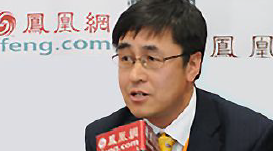时间: 2017-01-06 09:10
来源:
作者: 薛涛
导语:政府和社会资本合作(PPPs)已经吸引了有限的私有利益,并引发了跨部门之间的圈地战争。李克强在2016年的国务院常务会议中反复强调要推进PPP项目。前财政部长楼继伟也致力于控制监管,并尝试推进“强制”PPP项目。

Public Private Partnerships (PPPs) draw limited private interest and spark interagency turf war
state pushing PPPs
PPP was repeatedly promoted by Li Keqiang 李克强 in State Council executive meetings throughout 2016. Lou Jiwei 楼继伟 former finance minister fought to control supervision and pushed for exploring mandatory PPPs. They are slated to
● invite private investment: it encourages private firms to participate in government-initiated projects, providing an alternative investment option with stable returns. Since data was available in May 2012, private investment saw its first y-o-y decline in June 2016. Recovering in August, it remains low
● finance local government: the 2014 Budget Law made irresponsible borrowing more difficult. To fill gaps, local governments increasingly turn to private capital, especially as they struggle to meet annual fiscal targets, and their debt swells
● drive new growth: the central push to limit asset bubbles makes localities more reliant on other growth channels, including infrastructure investment
● increase efficiency: private sector buy-in brings in expertise and more market-savvy management
private sector unimpressed
Of the 10,471 registered PPP projects with total value of C¥12.46 tn, only 11 percenthave been implemented by end September 2016. Faring better weredemonstration PPP projects under Ministry of Finance (MoF) supervision, with 58.2percent implemented. Private investors complain
● SOEs, allowed to bid for PPPs in China, dominate profitable projects that generate steady revenue streams, such as building highways; State Council has sent inspection teams to provinces, urging fair treatment of private investors, but this has only pushed localities to favour SOEs more subtly
● local governments sometimes exploit private firms, changing the terms after signing contracts; MoF proposed to deduct local government transfer payments if they fail to pay private contractors. This controversial clause was omitted from the final management measures
● returns are unsatisfactory: value for money (VfM), fiscal affordability and PPP suitability tests are intended to ensure returns; for unprofitable projects that offer public services, like aged care, increased subsidies are necessary to offer returns, but this is difficult given fiscal shortfalls
● there is no comprehensive PPP Law; this leaves space for ministries to squabble over controlling projects, creating uncertainty for investors
agency turf war
Standards and budgeting for PPP projects are in theory controlled by MoF, whileNDRC directs project selection and price setting. In practice, both agencies havetried to cover both functions, separately issuing project lists and guidelines forfund use. To end interagency competition, on 7 July 2016, Li Keqiang announcedthat public service PPPs will be under MoF’s jurisdiction, and infrastructure PPPsunder NDRC. The State Council Legislative Affairs Office will lead drafting the PPPLaw.
However, the boundaries between public service and basic infrastructure PPPs arenot well defined, argues Wang Shouqing 王守清 Tsinghua University, as manybasic infrastructure projects, like building hospitals and schools, provide publicservices. When MoF issued ‘Notice for promoting PPP in public serviceindustries’on 11 October, it included the following sectors as public service projects under MoF’s jurisdiction
● energy
● transport
● water resources
● environmental protection
● agriculture
● forestry
● municipal construction
This is at odds with NDRC’s assertion that these sectors are basic infrastructure on both 18 August and 27 October.
The two ministries use different standards to evaluate PPP projects, complicating investors’ decisions. MoF uses value for money analysis (VfM), emphasising investment returns and cost efficiency for the public. NDRC did not include this standard in its ‘Guiding principles for implementing PPP projects in traditional infrastructure industries’; it may instead use feasibility studies to assess commercial viability.
legal fix needed
The PPP Law, currently being drafted, should clarify MoF and NDRC’s jurisdictions and set up contract safeguards to protect private investors. Other suggested and ongoing adjustments include
● increased transparency: the government is pushing for better information disclosure, suggests Wang Shouqing 王守清 Tsinghua University, such as publicising contract details and financial transactions
● more liquidity: Shanghai United Assets and Equity Exchange (SUAEE) is preparing to launch a PPP trading platform; as PPP projects often last more than 20 years, a vibrant secondary market will encourage more private participation
● better funding: more stable and long-term investors, like insurance funds, may enter PPPs
● perks from government: experts have suggested preferential tax policies to improve interest in PPPs
roundtable

Jin Yongxiang 金永祥 | Dayue Consulting CEO and founder
Jin is a PPP pioneer, advising private investors as early as the 1990s. Already a consultant for MoF’s PPP database, he recently became one for NDRC’s too. NDRC and MoF PPP guidelines are at odds with each other, argues Jin. NDRC policy includes neither VfM nor fiscal affordability assessment; MoF uses these to select private investors. NDRC policy stipulates private partners can bypass rebidding for facility procurement only if they were selected through bidding originally; MoF policy allows firms to bypass rebidding on other grounds. Finally, NDRC allows state organs and their entrusted organisations to carry out PPP, whereas MoF permits only government, designated functional departments, and designated service agencies to do so. As both ministries built their own PPP databases, says Jin, the greatest concern is that NDRC will dispute the legitimacy of MoF’s projects, and MoF will refuse to fund NDRC’s projects.

Liu Fei 刘飞 | AllBright Law Offices partner
Liu helped draft the new NDRC PPP work guidelines. Answering market concerns, she denies the new policy contradicts MoF’s guidelines, saying the absence of VfM and fiscal affordability in NDRC guidelines does not diminish their importance; governments and firms are encouraged to follow standards issued by other ministries. In addition, NDRC follows Bidding Law and MoF follows ‘Implementation measures on Bidding Law’, leading to the slight differences in requirements; but the two are not incompatible.

Xue Tao 薛涛 | E20 Environmental Platform senior partner
With 12 years of PPP consulting experience, Xue specialises in municipal construction and environmental projects. Currently a PPP expert for MoF, he argues the industry has grown from nappies to nursery, with more self-discipline and independence. He warns of irresponsible fundraising by local governments, financial institutions hoping for risk-free investments, and firms adding unnecessary leverage. Xue argues that despite friction between the two central agencies, local planning authorities and finance bureaus work together effectively, with local government playing a key moderating role.
context
18 nov 2016: PPP Law will first come out as regulations by State Council, says Jiao Xiaoping 焦小平 MoF
8 nov 2016: PPP is mooted by NDRC to revitalise the Northeast
27 oct 2016: NDRC releases ‘Guiding principles for implementing PPP projects in traditional infrastructure industries’
20 oct 2016: MoF releases ‘Finance management measures for PPP projects’ after its call for comment, removing the controversial clause reducing local government transfer payments for failing to pay private firms promised amounts
13 oct 2016: MoF releases the third batch of demonstration PPP projects, with total investment value of C¥1.17 tn
11 oct 2016: MoF releases ‘Notice on promoting PPP in public services’ , stipulating to explore mandatory PPP for waste and sewage disposal systems
15 sep 2016: NDRC releases list of PPP projects worth C¥2 tn covering energy, transport, water resources, agriculture, forestry and public works
30 aug 2016: NDRC releases focus areas for infrastructure PPPs
18 aug 2016: NDRC releases ‘Notice on conducting basic infrastructure PPP’ clarifying PPP projects under its jurisdiction
17 aug 2016: Qian Jin 钱璡 SUAEE PPP trading platform CEO says Shanghai United Assets and Equity Exchange (SUAEE) is preparing to launch a PPP secondary market by end 2016
11 aug 2016: expert calls for changes to tax policy to support PPPs
9 jul 2016: State Council announces its Legislative Affairs Office will lead merging PPP Law and Concession Law drafting, ending a clash between MoF and NDRC
7 jun 2016: State Council inspection uncovers obstacles for PPP implementation, following an inspection on barriers for private investment
27 may 2016: MoF outlines requirements for PPP projects’ information disclosure
30 sep 2015: MoF and ten financial institutions sets up a C¥180 bn fund toadvance PPP projects
12 sep 2015: MoF stresses PPP needs institutional investors such as insurance firms and pension funds
22 may 2015: State Council releases ‘Guiding Opinions on public service PPP projects’ to address private sector concerns
7 apr 2015: Liu Xiaoping 刘小平 Lianhe Ratings says local government financing platforms have found loopholes to profit from PPP
4 mar 2015: MoF and MoHURD launch PPP in municipal public services including utilities, bridges, roads, and transport infrastructure
8 dec 2014: Wu Yaping 吴亚平 NDRC says PPP can overcome shortcomings of both state and the market
(Source and author:China Policy,8 Dec 2016)
来源:China Policy
编辑: 李姝乐

武汉大学和北京大学光华管理学院获得理学学士和工商管理硕士学位。
现任E20环境平台执行合伙人和E20研究院执行院长,北京易二零环境股份有限公司总经理,湖南大学兼职教授,沈阳工业大学环境与化学工程学院兼职教授,华北水利水电大学管理与经济学院客座教授,中科院生态环境研究中心硕士生校外导师,天津大学特聘讲师,国家发改委和财政部PPP双库的定向邀请专家,住房和城乡建设部城镇水体污染治理工程技术应用中心村镇水生态环境治理领域专家,世界银行和亚洲开发银行注册专家(基础设施与PPP方向)、国家绿色发展基金股份有限公司专家咨询委员会专家库专家、巴塞尔公约亚太区域中心化学品和废物环境管理智库专家、中国环保产业研究院特聘专家、中国环保产业协会环保产业政策与集聚区专业委员会委员、中国城市环境卫生协会垃圾焚烧专家委员会委员,环境部“污泥处理处置产业技术创新战略联盟”特聘顾问。住建部指导《城乡建设》杂志编委、《环境卫生工程》杂志编委、财政部指导《政府采购与PPP评论》杂志编委,并担任上海城投、天津创业环保、碧水源、中建环能等上市公司独立董事。
在PPP专业领域,薛涛现任清华PPP研究中心投融资专业委员会专家委员、全国工商联环境商会PPP专委会秘书长、中国PPP咨询机构论坛第一届理事会副秘书长、生态环境部环境规划院PPP中心专家委员会委员、国家发改委国合中心PPP专家库成员、中国青年创业导师、中央财经大学政信研究院智库成员、中国城投网特聘专家等。
20世纪90年代初期,薛涛在中国通用技术集团负责世界银行在中国的市政环境基础设施项目管理,其后在该领域积累了十二年的环境领域PPP咨询及五年市场战略咨询经验,曾为美国通用电气等多家国内外上市公司提供咨询服务,对环境领域的投融资、产业发展和市场竞合格局有着深刻理解;2014年初加入E20研究院并兼任清华大学环保产业研究中心副主任,着力于环境产业与政策研究、PPP以及企业市场战略指导等方向。
出版书籍有《涛似连山喷雪来:薛涛解析中国式环保PPP》和《薛涛解析管理之道与认知之得》,其中,《涛似连山喷雪来:薛涛解析中国式环保PPP》于2018年12月1日正式出版,2021年11月再版;《薛涛解析管理之道与认知之得》2024年7月出版。
主要工作成果包括英国全球繁荣基金全国水务PPP示范项目典型案例研究 、城市水务市场化改革的进展与政策建议研究、贵阳南明河综合整治(BOT+TOT)项目(北控水务) 、财政部第二批示范项目世行贷款宁波厨余PPP项目等。
